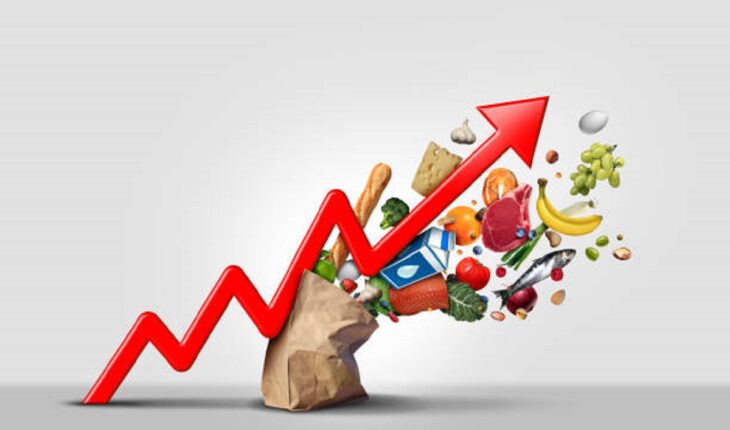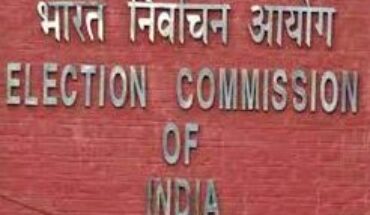To strike a balance between inflation and development, in the latest monetary review, the Monetary Policy Committee has not changed the repo rate for the 9th consecutive time and has kept it unchanged at 6.5 percent. Earlier, the repo rate was increased in February 2023.
The Reserve Bank mainly tries to fight inflation by increasing the repo rate. When the repo rate is high, banks get loans from the Reserve Bank at a higher rate, due to which banks also give loans to customers at a higher rate. By doing this, the liquidity of money in the economy decreases and due to lack of money in the pockets of the people, the demand for goods decreases and due to the high price of goods and products, their sale decreases, due to which a decline in inflation is recorded.
Similarly, when there is a slowdown in the economy, efforts are made to increase the liquidity of money in the market to accelerate the developmental work and for this also the repo rate is reduced, so that the banks get loans at cheaper rates from the Reserve Bank and after getting loans at cheaper rates, the banks also give loans to the customers at cheaper rates.
At present, the inflation rate remains a matter of concern for the government and the Reserve Bank of India. According to Care Edge Rating, despite the loan rate not softening, the loan growth rate has been around 16 percent in the financial year 2023-24 and it is estimated to be between 14 to 14.5 percent in the financial year 2024-25. Such a situation is very positive for the Indian economy. However, this can be called an exceptional situation. However, due to the rapid pace of lending, both economic activities and growth rate are accelerating. For this reason, the Reserve Bank of India has increased its growth forecast for the financial year 2025 from 7.00 percent to 7.2 percent.
The GDP growth rate in the fourth quarter of FY 2023-2024 was 7.8, while it was 6.1 percent in the same quarter last year. At the same time, the GDP growth rate in the financial year 2023-24 was 8.2 percent, which is 1.2 percent more than the estimate of the Reserve Bank of India i.e. the Reserve Bank had estimated the GDP growth rate to be 7 percent during the financial year 2023-24. The GDP growth rate was 7 percent in the last financial year. According to the Ministry of Statistics, the growth rate remained fast during the period under review due to strong performance in the manufacturing and mining sectors. The manufacturing sector has grown by 9.9 percent, which was minus 2.2 percent in the financial year 2022-23. Similarly, the mining sector grew at the rate of 7.1 percent during the financial year 2023-24, which was 1.9 percent in the financial year 2022-23. It is noteworthy that the manufacturing sector plays an important role in employment generation.
Retail inflation remains a matter of concern, as the price of food items is expected to remain high in the months of July, August and September due to floods and rains. However, there may be some softening in it in winter. Although the Reserve Bank of India has projected inflation to be 4.5 percent in the financial year 2025, this level is not enough to take decisive decisions for development.
According to the National Statistical Office, retail inflation in June rose by 0.33 percent to 5.08 percent as compared to May, while it was 4.75 percent in previous month, which was a 12-month low. There was some reduction in retail inflation in April, but it was slightly higher than May at 4.83 percent. Retail inflation was 4.81 percent in June 2023, while it was 4.44 percent in July 2023.
Inflation is directly related to purchasing power. For example, if the inflation rate is 6 percent, then the value of Rs.100/- earned will be only Rs.94/-. Therefore, investors should invest according to the level of inflation, otherwise they will get less returns. The increase and decrease of inflation depend on the demand and supply of the product. If people have more money, they will buy more products and buying more products will increase the demand and if the supply is not according to the demand, the price of the products will increase.
In this way, the market will get caught in the vicious circle of inflation. Excessive flow of money in the market or shortage of products causes inflation. On the other hand, if the demand is less and the supply is more, then inflation will be less.
Customers buy goods from the retail market and the Consumer Price Index (CPI) measures the change in the price of products available in the market. The CPI measures the average price paid for products and services. Apart from crude oil, prices of products, cost of production, there are many other things which play an important role in determining the retail inflation rate. Currently, there are about 300 products based on whose prices the retail inflation rate is determined.
Thus, inflation plays an important role in determining one’s purchasing power. When inflation increases, the prices of both goods and services increase, which reduces the purchasing power of an individual and reduces the demand for goods and services. Then, their sales decrease, their production decreases, the company incurs losses, workers are laid off, employment generation decreases, etc. Due to this, economic activities slow down, and the pace of development is hampered.
Despite the lending interest rate remaining high for the last few months, loan disbursement is increasing, and the pace of growth also remains high. However, such a situation is an exception.
HSBC India’s PMI figure stood at 58.1 in July 2024, which was 58.3 points in June and 57.5 points in May, while it was 58.8 points in April. This figure reflects the boom in economic activities and this figure being more than 50 points means that economic activities in the country are booming.
Inflation in India is at a worrying level despite being within the tolerance limit set by the central bank. Therefore, the policy rates have been kept unchanged in the monetary review by the Reserve Bank of India. The central bank is very sensitive about inflation, and it wants to keep the economy strong by maintaining a balance between inflation and growth rate, so that the common man does not face any problem and the pace of development also remains fast.Satish Singh, Ahmedabad Based Senior Columnist, views are personal






